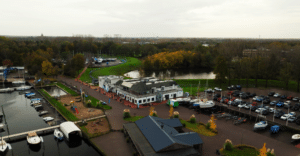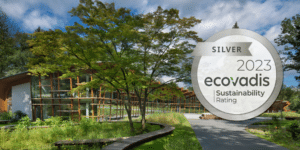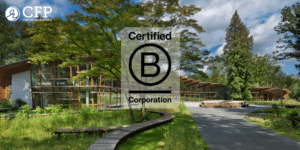

What you can expect from the Green Buildings Tool in 2023 and beyond
Our aim is to keep innovating our Green Buildings Tool to offer insights and solutions across the globe. Therefore, we will develop new features and algorithms to adjust and to solve global challenges with local specifics. This is what you can expect in 2023, and beyond.
The 3 trends underpinning our 2023 roadmap
Based on our impact of the past few years and the growth of CFP, there are three important themes which will provide focus to 2023:
- The grown importance of reducing energy consumption;
- The effects of high inflation and increase of interest rate on the real estate market;
- More stringent (reporting) requirements from governments and banks on sustainability (risks).
Real estate investors, users and other stakeholders are affected by this and our role is to help them to comply and strategise future-proofing their real estate.
Introducing the Tool in new countries together with C&W’s network of front runners
With the Green Buildings Tool already deployed in The Netherlands, England, Wales, Scotland, Belgium and Australia, 2023 will see further adaptation of the tool to be utilised in more than 10 new countries, with the following being the countries of highest priority based on demand and interest:
- Germany
- Singapore
- Northern Ireland
- Spain
- France
- Portugal
- Poland
- USA
- Ireland
- Canada
- Hong Kong
- Japan
This project of adapting the tool to the above local contexts involves the consideration and integration of local climates, local regulations and policies and the cost of investment measures in local context and currency among other things.
The tool development for Germany is currently being fast-tracked due to a potential client and should be ready for deployment during Q3. Introductions with major banks for initial demo’s of the Tool are welcome in every country. The more traction, the higher the priority for configuration and go-live.
New features to solve the challenges clients face in 2023
The MEES Compliance Module: A soon-to-be-launched feature of the tool will support clients towards compliance with the Minimum Energy Efficiency Standard (MEES) in the UK and similar EPC regulations as set out by governments throughout Europe. This new module will enable users to view which assets are compliant, at risk, or non-compliant with the regulations. To determine these statuses, this feature will consider the EPC expiry date, the lease expiry date and the relevant deadlines. After determining compliance, the respective business cases will be generated for the compliant, at risk, and non-compliant assets. This module will eventually also allow users to insert their own targets and deadlines based on their custom (corporate) ESG ambitions.
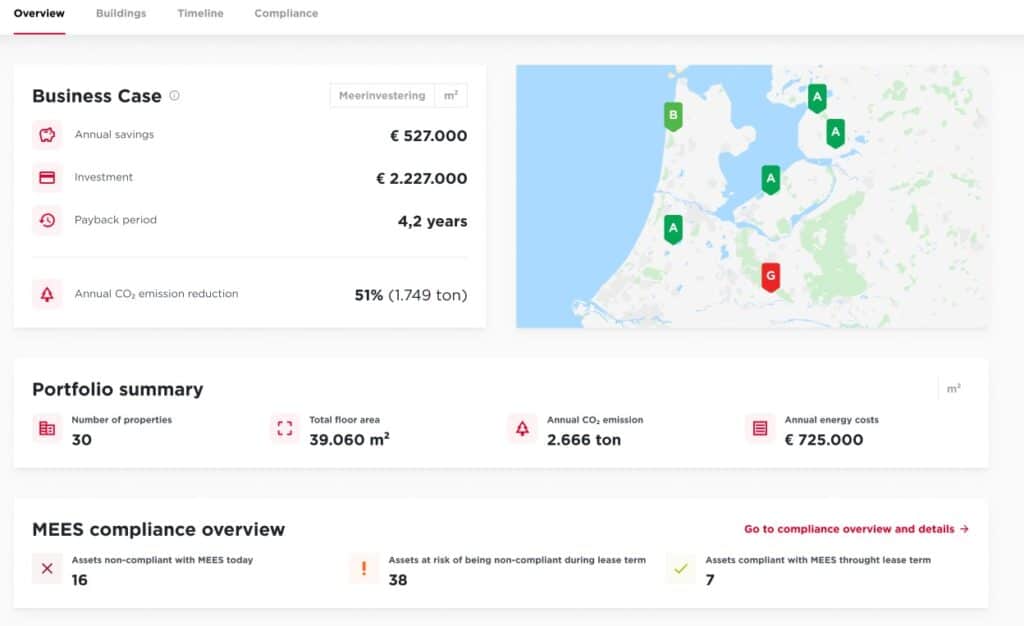
The Carbon/CRREM Feature: Another new feature which is in development to be launched in 2023 is the Carbon emissions of the asset. The Carbon quantifies the associated carbon emissions of the energy consumption of a building based on the CRREM decarbonization pathways. This is based on actual consumption data uploaded per asset or the provided benchmark consumption data. Expressed in kg CO2e/m2/year, it provides a simple and effective way to measure progress in terms of energy efficiency and identify opportunities for improvement. In order to simplify and provide comparison across assets, the Carbon will use indicative colours or labels to define whether an asset is either:
- Ready for 2050 / Paris proof
- On CRREM target
- <50% off the current CRREM target
- <100% off the current CRREM target
The Carbon will enable the building owner to identify those assets which will soon become stranded or are already stranded and are facing financial risk due to this status. Improved scenarios are calculated based on the selected retrofit measures within the tool and this provides the user the ability to plan retrofits across a portfolio to avoid stranded assets and plan for Paris Proof 2050 targets.
The Climate Risk indicator: A feature which is currently in discussion is the climate risk or climate adaptation feature. This feature would identify assets which face a physical climate risk – a risk of loss of value of properties as a result of damage caused by climate change such as extreme weather events. These risks would be determined based on location and climate data.
Get in touch to share your ideas and stay tuned for updates
The development of the Green Buildings Tool is an evolving process and will respond to industry demands. Some features which will be considered in the longer term relate to embedded carbon, circularity and BREEAM or LEED reporting to name a few. If there is a feature that would be a value-add to your clients, please reach out to CFP’s Catherine Luyt (cluyt@cfpgreenbuildings.com).
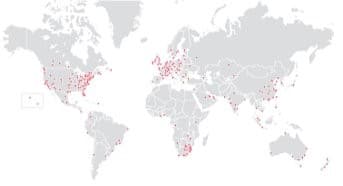
Throughout the year, we will keep you posted on the availability of new developments. Stay tuned and feel free to already set up demos for major clients.





